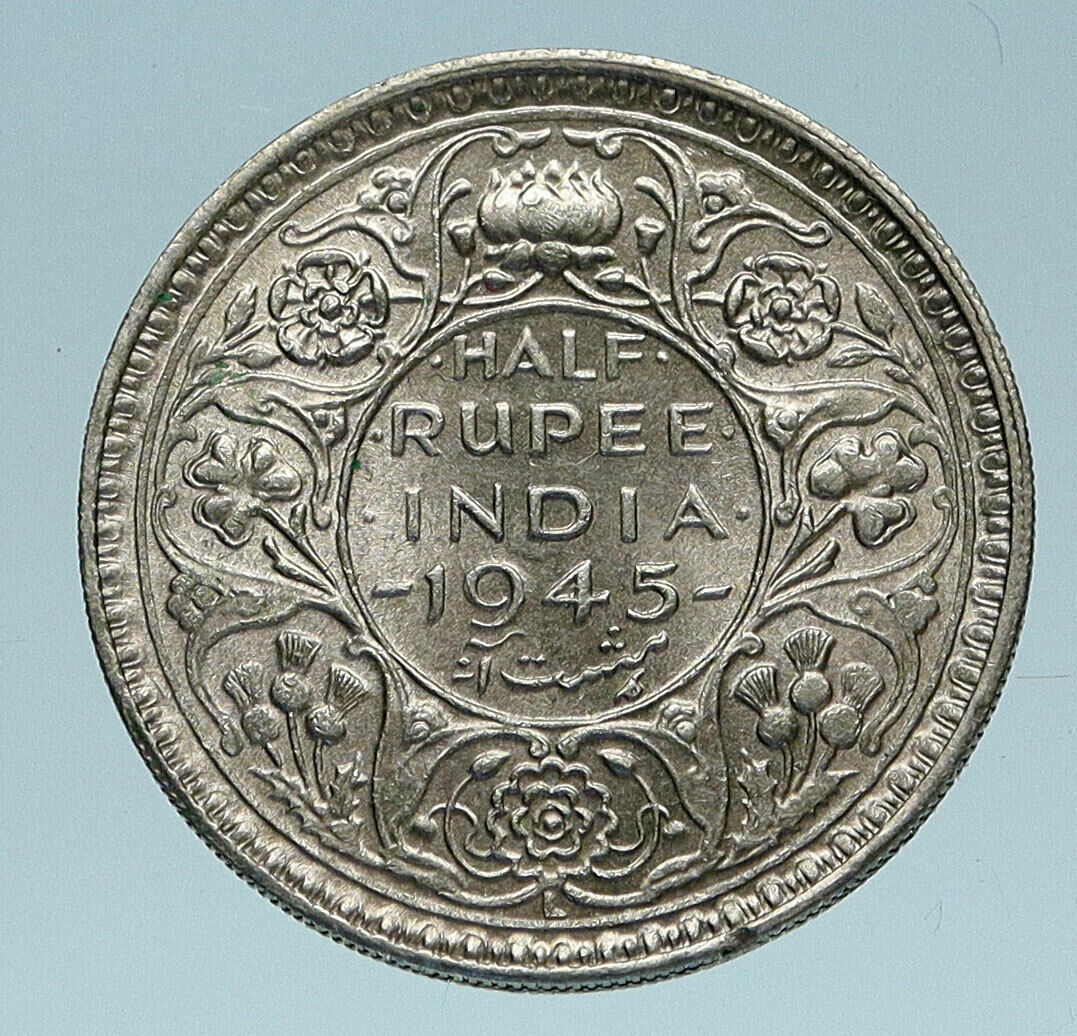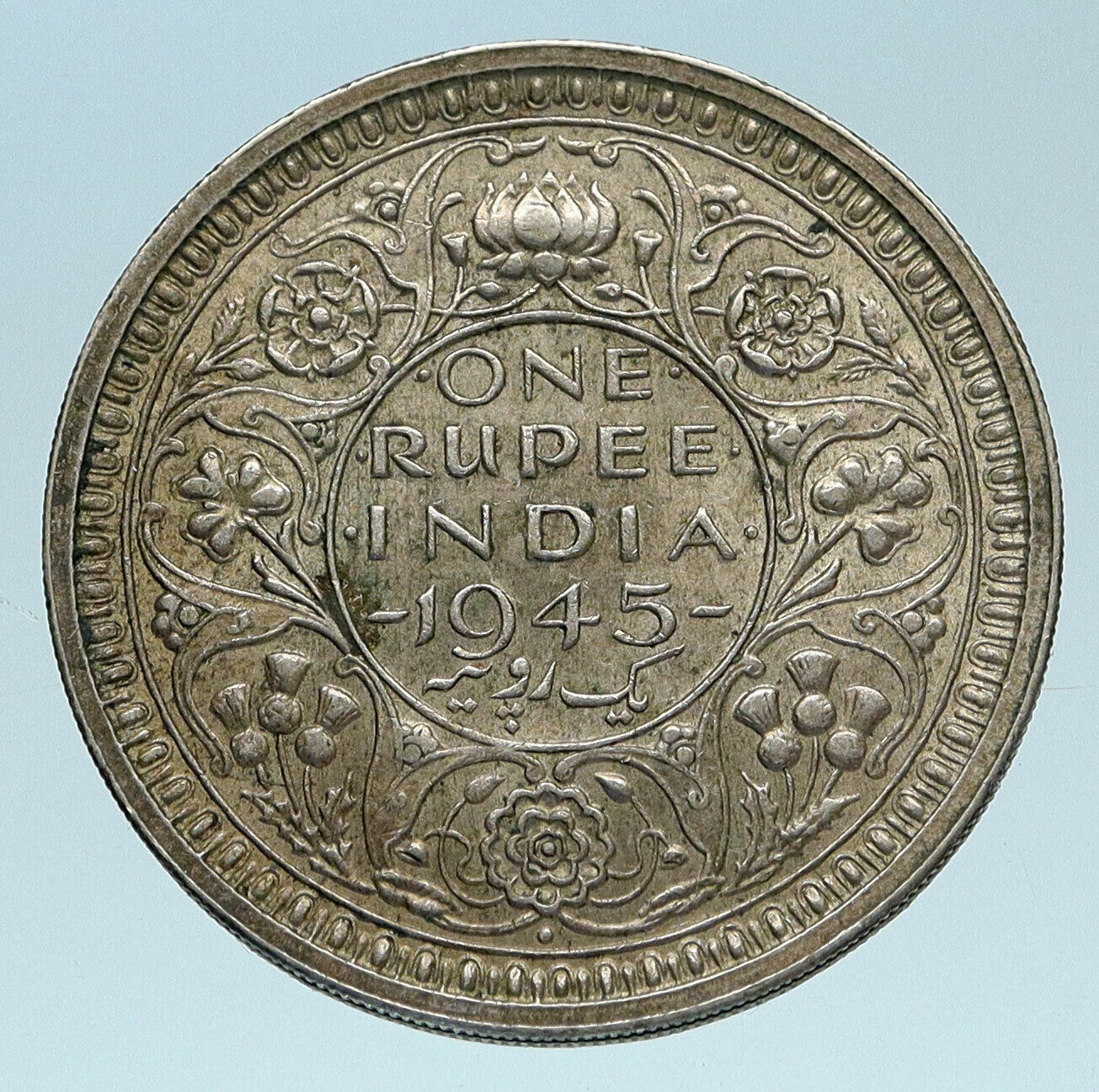|
India under George VI – King: 11 December 1936 – 6 February 1952
1941 Copper 20 Cash 20mm (9.01 grams)
Reference: KM# 193.2
“Shri Chamundi” in Kannada at the top, with sun and moon between “Shri”; Sardula lion advancing to left in middle.
XX CASH, “Krishna” in Kannada, followed by “Struck in Mysore” in Persian at the centre.
Coin Notes:
Although the coin states that it was struck at Mysore, the mint had already been transferred to Bangalore in 1833.
You are bidding on the exact item pictured, provided with a Certificate of Authenticity and Lifetime Guarantee of Authenticity.
 Mysore is a city in the southern part of the state of Karnataka, India. Mysore city is geographically located between 12° 18′ 26″ north latitude and 76° 38′ 59″ east longitude. It is located at an altitude of 770 m (2,530 ft) above mean sea level. Mysore is a city in the southern part of the state of Karnataka, India. Mysore city is geographically located between 12° 18′ 26″ north latitude and 76° 38′ 59″ east longitude. It is located at an altitude of 770 m (2,530 ft) above mean sea level.
Mysore is located in the foothills of the Chamundi Hills about 145.2 km (90 mi) towards the southwest of Bangalore and spread across an area of 286.05 km2 (110 sq mi). Mysore City Corporation is responsible for the civic administration of the city, which is also the headquarters of the Mysore district and the Mysore division. In November 2020, A gazetted notification was passed by the state government converting nearby census town of Hootagalli into a City Municipal Council along with four more Town Panchayats of Bhogadi, Kadakola, Rammanahalli and Srirampura, expanding the city area from 155.7 sq.km to 286.05 sq.km. This also increased the population of the urban agglomeration from 990,900 to 1,060,120. According to United Nations, Mysuru is projected to have a population of 1.162 million in 2018, making it the second largest city in the state.
It served as the capital city of the Kingdom of Mysore for nearly six centuries from 1399 until 1956. The Kingdom was ruled by the Wadiyar dynasty, with a brief period of interregnum in the late 18th century when Hyder Ali and Tipu Sultan were in power. The Wadiyars were patrons of art and culture. Tipu Sultan and Hyder Ali also contributed significantly to the cultural and economic growth of the city and the state by planting mulberry trees introducing silk in the region and fighting 4 Anglo-Mysore wars against the British. The cultural ambience and achievements of Mysore earned it the sobriquet Cultural Capital of Karnataka.
Mysore is noted for its heritage structures and palaces, including the Mysore Palace, and for the festivities that take place during the Dasara festival when the city receives many tourists from around the world. It lends its name to various art forms and culture, such as Mysore Dasara, Mysore painting; the sweet dish Mysore Pak, Mysore Masala Dosa; brands such as Mysore Sandal Soap, Mysore Ink; and styles and cosmetics such as Mysore Peta (a traditional silk turban) and the Mysore silk saris. Mysore is also known for its special variety of jasmine flower fondly referred as “Mysore Mallige” and betel leaves. Tourism is the major industry alongside the traditional industries. Mysore’s inter-city public transportation includes rail, bus and flights.
The name Mysore is an anglicised version of Mahishūru, which means the abode of Mahisha in the vernacular Kannada. The common noun Mahisha, in Sanskrit, means buffalo; in this context, however, Mahisha refers to Mahishasura, a mythical demon who could assume the form of both human and buffalo, who, according to Hindu mythology, ruled the ancient parts of Mysore Kingdom, known in Sanskrit as Mahíšhaka, centred at Mahishapura. He was killed by the Goddess Chamundeshwari, whose temple is situated atop the Chamundi Hills, after whom it is named. ‘Mahishapura’ later became Mahisūru (a name which, even now, the royal family uses), and finally came to be anglicised as Mysore by the British and Maisūru/Mysuru in the vernacular Kannada language.
In December 2005, the Government of Karnataka announced its intention to change the English name of the city to Mysuru. This was approved by the Government of India in October 2014 and Mysore was renamed (along with twelve other cities) to “Mysuru” on 1 November 2014.
The site where Mysore Palace now stands was occupied by a village named Puragere at the beginning of the 16th century. The Mahishūru Fort was constructed in 1524 by Chamaraja Wodeyar III (1513–1553), who passed on the dominion of Puragere to his son Chamaraja Wodeyar IV (1572–1576). Since the 16th century, the name of Mahishūru has commonly been used to denote the city. The Kingdom of Mysore, governed by the Wodeyar family, initially served as a vassal state of the Vijayanagara Empire. With the decline of the Vijayanagara Empire after the Battle of Talikota in 1565, the Mysore Kingdom gradually achieved independence, and by the time of King Narasaraja Wodeyar (1637) it had become a sovereign state. Seringapatam, near Mysore, the present-day Srirangapatna, was the capital of the kingdom from 1610. The 17th century saw a steady expansion of its territory and, under Narasaraja Wodeyar I and Chikka Devaraja Wodeyar, the kingdom annexed large areas of what is now southern Karnataka and parts of Tamil Nadu, to become a powerful state in the southern Deccan.
The kingdom reached the height of its military power and dominion in the latter half of the 18th century, under the de facto rulers Hyder Ali and his son Tipu Sultan. The latter demolished parts of Mysore to remove legacies of the Wodeyar dynasty. During this time, the kingdom of Mysore came into conflict with the Marathas, the British, and the Nizam of Hyderabad, leading to the four Anglo-Mysore wars, success in the first two of which was followed by defeat in the third and fourth. After Tipu Sultan’s death in the Fourth Anglo-Mysore War in 1799, the capital of the kingdom was moved back to Mysore from Seringapatam, 249 and the kingdom was distributed by the British to their allies of the Fourth Mysore war. Part of the kingdom was annexed into the Madras Presidency, another part was awarded to the Nizam of Hyderabad. The landlocked interior of the defeated kingdom of Mysore was turned into a princely state under the suzerainty of the British Crown, with the five-year-old Wodeyar Krishnaraja III as titular ruler and with Purnaiah, who had served under Tipu, as chief minister or Diwan and Lt. Col. Barry Close as Resident. The British took control of Mysore’s foreign policy and insisted on an annual tribute for maintaining a standing British army at Mysore. Purnaiah is credited with improving Mysore’s public works. In 1831, claiming there was maladministration, the British took direct control of the princely state.
For the next fifty years, the kingdom of Mysore was under the direct rule of British Commissioners, and in 1831 the city of Mysore lost its status as the administrative centre, when the British Commissioner moved the capital to Bangalore.
In 1876–77, towards the end of the period of direct British rule, Mysore suffered from the Great Famine of 1876–1878, with the nearly a fifth of the population dying. In 1881, Maharaja Chamaraja Wadiyar X was given control of Mysore, in a process called rendition, but with a resident British officer and a Diwan to handle the Maharaja’s administration, and the city of Mysore regained its status as the capital. 254 Until the independence of British India (which did not include Mysore) in 1947, Mysore remained a Princely State within the British Indian Empire, with the Wodeyars continuing their rule.
The Mysore municipality was established in 1888 and the city was divided into eight wards. In 1897 an outbreak of bubonic plague killed nearly half of the population of the city. With the establishment of the City Improvement Trust Board (CITB) in 1903, Mysore became one of the first cities in Asia to undertake planned development of the city. Public demonstrations and meetings were held there during the Quit India movement and other phases of the Indian independence movement.
After Indian Independence, Mysore city remained as part of the Mysore State, now known as Karnataka. Jayachamarajendra Wodeyar, then king of Mysore, was allowed to retain his titles and was nominated as the Rajapramukh (appointed governor) of the state. He died in September 1974 and was cremated in Mysore city. Over the years, Mysore became well known as a centre for tourism; the city remained largely peaceful, except for occasional riots related to the Kaveri River Water Dispute. Among the events that took place in Mysore and made national headlines were a fire at a television studio that claimed 62 lives in 1989, and the sudden deaths of many animals at the Mysore Zoo.
Colonial India is the part of the Indian subcontinent which was under the control of European colonial powers, through trade and conquest. The first European power to arrive in India was the Macedonian army of Alexander the Great in 327-326 BC. The satraps he established in the north west of the subcontinent quickly crumbled after he left. Later, trade was carried between Indian states and the Roman Empire by Roman sailors who reached India via the Red Sea and Arabian Sea , but the Romans never sought trading settlements or territory in India. The spice trade between India and Europe was one of the main types of trade in the world economy and was the main catalyst for the period of European exploration . The search for the wealth and prosperity of India led to the accidental “discovery” of the Americas by Christopher Columbus in 1492. Only a few years later, near the end of the 15th century, Portuguese sailor Vasco da Gama became the first European to re-establish direct trade links with India since Roman times by being the first to arrive by circumnavigating Africa (1497-1499). Having arrived in Calicut , which by then was one of the major trading ports of the eastern world, he obtained permission to trade in the city from Saamoothiri Rajah . Trading rivalries brought other European powers to India. The Netherlands , England , France, and Denmark established trading posts in India in the early 17th century. As the Mughal Empire disintegrated in the early 18th century and then the Maratha Empire became weakened after the third battle of Panipat , the relatively weak and unstable Indian states which emerged were increasingly open to manipulation by the Europeans through dependent “friendly” Indian rulers. In the later 18th century Britain and France struggled for dominance through proxy Indian rulers and also by direct military intervention. The defeat of the redoubtable Indian ruler Tipu Sultan in 1799 marginalised French influence. This was followed by a rapid expansion of British power through the greater part of the subcontinent in the early 19th century. By the middle of the century, the British had already gained direct or indirect control over almost all of India. British India contained the most populous and valuable provinces of the British Empire and thus became known as “the jewel in the British crown”.
|






 Mysore is a city in the southern part of the state of Karnataka, India. Mysore city is geographically located between 12° 18′ 26″ north latitude and 76° 38′ 59″ east longitude. It is located at an altitude of 770 m (2,530 ft) above mean sea level.
Mysore is a city in the southern part of the state of Karnataka, India. Mysore city is geographically located between 12° 18′ 26″ north latitude and 76° 38′ 59″ east longitude. It is located at an altitude of 770 m (2,530 ft) above mean sea level.




